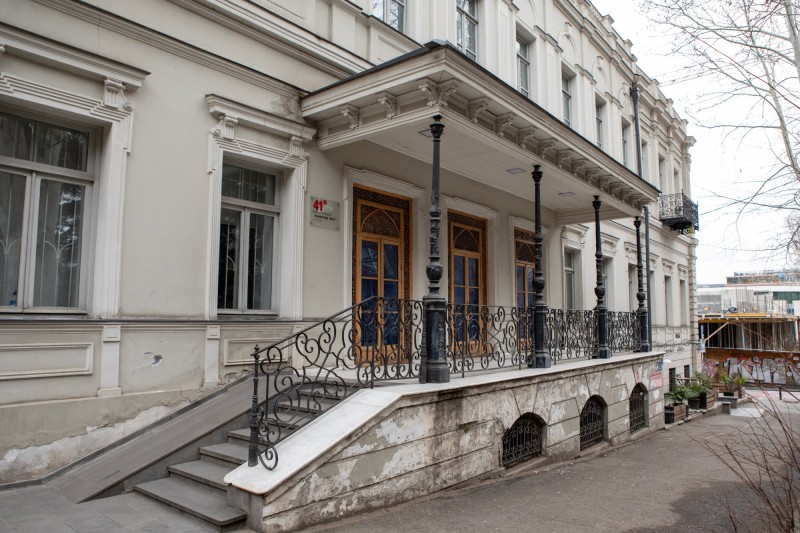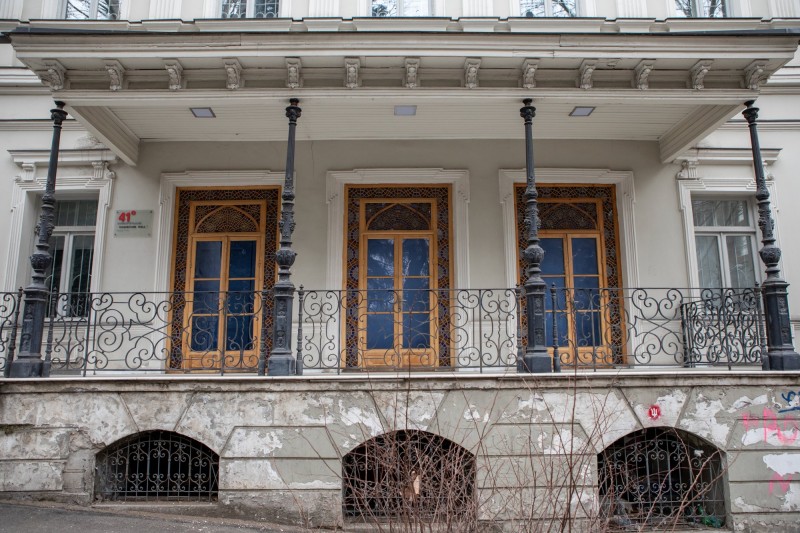
Information in details
The building built in the 1950s at 8, Chanturia Street was the palace of Alexander Baryatinsky, the governor general of the Caucasus, the triumphant of the Dagestan wars. The building is important as one of the earliest examples of Tbilisi's urban architecture. Since 1938, the G. Leonidze State Literature Museum of Georgia was located.
The rather large-scale building for its time is decided in the neoclassical style, it is distinguished by orderly proportions and restrained decorative decoration. The structural composition of the building is based on the classical intersection of horizontal and vertical axes. The central facade of the building opens out on Chanturia Street and overlooks the April 9 garden. The building stands on a sloping terrain, due to which its basement floor increases significantly in height. The building, built on a high plinth, with the same basement floor, currently forms a two-story volume, although it is clear from old photographs that the central section of the building, unlike the end wings, was one-story, and the facade composition of the building was also highlighted by high, side wings crowned with a reticulate parapet. Thus, the addition of a floor on the axis of symmetry was carried out in later times. It is worth noting the central entrance of the building, the balcony-portico placed on the axis of symmetry of the eastern facade, which opens to the street through three rectangular doors decorated with stained glass. The balcony is attached to the basement floor, which is advanced on the sidewalk, which was later opened with an open staircase and ramp on its southern side, and now it is possible to climb to the balcony from the street side. Attention is drawn to the iron open work staircase of the balcony and the iron columns supported by the architrave roof on the brackets. However, the main entrance to the building is the entrance door in the south wing, which connects the inner courtyard with the street line through a corridor. A tall door with carved wood and wrought iron grilles traditionally illuminates a vestibule with a marble floor and staircase through a transom. The entrance hall is compositionally balanced by a third door on the basement floor on the right wing of the facade (also with carved wood wings and iron lattice windows). The authenticity of the facades is mostly preserved, except for the replaced window frames, entrance doors, and, depending on the function of the museum, a large number of built-up openings. As a whole, the building maintains the main line of authenticity, which is also important for the historical-artistic integrity of the street. The Leonidze Museum of Georgian State Literature presents unique examples of ancient and modern Georgian literature, as well as the cultural heritage of foreign countries, including manuscripts (12th-century Athenian four-chapters, 17th-19th century philosophical and religious writings), works of famous Georgian and foreign writers and artists. Pictorial and graphic works, etc. Most of the exhibits of the museum were collected during the leadership of Giorgi Leonidze, which is why the museum was named after him in 1967 (one year after the death of the writer).


 თბილისი, Chanturia Street N8
თბილისი, Chanturia Street N8
 41.6994072, 44.7992453
41.6994072, 44.7992453




